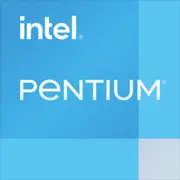Intel Pentium G3470

Intel Pentium G3470: A Comprehensive Review of the Budget Processor from 2025
Introduction
The Intel Pentium G3470 processor, released in 2014, is still found in budget builds and upgrade systems today. Despite its age, it remains relevant for specific tasks due to its low power consumption and availability. In this article, we will explore who this chip is suitable for in 2025, how to build a PC based on it, and the potential pitfalls awaiting users.
1. Key Specifications: Haswell Architecture and Modest Power
Architecture and Process Technology
The G3470 is built on the Haswell microarchitecture (4th generation Intel Core) with a 22 nm process technology. This allowed for reduced power consumption (TDP — 53 W) compared to previous generations. However, in 2025, 22 nm seems archaic: modern processors utilize 5–7 nm, providing a better performance-to-heat ratio.
Performance
- 2 cores / 2 threads with a base clock speed of 3.6 GHz (no turbo boost).
- Cache: 3 MB L3.
- Integrated graphics: Intel HD Graphics (for the 4th generation) with a base frequency of 350 MHz.
Real-World Performance:
- In synthetic tests (e.g., Cinebench R23), it scores ~1200–1300 points — on par with modern budget processors like the Intel Celeron G6900 (1300 points), but lacks multi-threading support.
- In games (CS:GO, Dota 2), it delivers 30–40 FPS at low settings (1080p) without a discrete graphics card.
Key Features
- Support for AVX2 and AES-NI instructions — useful for encryption and certain optimized applications.
- The video accelerator can decode 4K H.264, but H.265/VP9 requires software processing.
2. Compatible Motherboards: LGA 1150 Socket and Limited Options
Socket and Chipsets
The G3470 uses the LGA 1150 socket. Compatible chipsets:
- H81 — basic option (2 RAM slots, no RAID).
- B85 — supports 4 memory slots and more SATA 6 Gb/s ports.
- H97/Z97 — advanced capabilities (M.2, USB 3.0), but in 2025 such boards are hard to find new.
Model Examples:
- ASRock H81M-DGS R2.0 ($45–60) — a minimalist board for office tasks.
- Gigabyte GA-B85M-D3H ($70–90) — an optimal choice for upgrades.
Selection Tips
- Look for boards with USB 3.0 and HDMI — this will simplify peripheral connections.
- Avoid Z87/Z97 chipsets unless you plan to overclock (G3470 is locked for overclocking).
3. Supported Memory: DDR3 and Its Limitations
The processor works only with DDR3 (up to 1600 MHz in dual-channel mode). In 2025, this is an outdated standard, but memory is available at a low price:
- 8 GB (2x4 GB) DDR3-1600 — $25–30.
Important: Maximum capacity is 32 GB, but for most tasks, 8–16 GB will suffice.
4. Power Supply: Minimum Requirements
Considering the 53 W TDP and no discrete graphics card, a power supply of 300–400 W is sufficient. Recommendations:
- EVGA 400 W1 ($35) — for systems without upgrades.
- Corsair CX450 (80 Plus Bronze, $55) — with headroom for adding a GTX 1650-level graphics card.
Tip: When installing a GPU, consider its power consumption. For instance, the GTX 1650 requires a minimum 300 W PSU.
5. Pros and Cons: Who Should Consider This?
Pros
- Price: New processors cost $40–50 (rare in 2025, more often found used).
- Energy efficiency: Suitable for a PC running 24/7 (e.g., a media server).
- Integrated graphics: No need for a separate graphics card for basic tasks.
Cons
- 2 cores: Multi-threaded applications (Photoshop, Blender) will lag.
- No support for DDR4/5, PCIe 4.0: Limits upgrades.
- Outdated platform: New OS (Windows 12) may not receive drivers.
6. Use Cases: Where is G3470 Still Relevant?
Office Tasks
- Document work, browsing (10+ tabs), Zoom — the processor manages, but some stutter may occur under load.
Multimedia
- 4K playback via VLC with hardware acceleration (H.264). For streaming services (Netflix 4K), an external decoder may be needed.
Gaming
- Without a discrete graphics card: Minecraft, League of Legends at low settings.
- With GPU (GTX 1650): GTA V, Fortnite at 1080p/30 FPS.
Home Lab Projects
- Server for home automation (Home Assistant) or NAS — thanks to low TDP.
7. Comparison with Competitors
Intel Celeron G6900 (2023)
- Price: $55.
- Advantages: 2 cores / 2 threads, but supports DDR4, PCIe 5.0.
- Conclusion: Better choice for new builds.
AMD Athlon 3000G (2020)
- Price: $60.
- Advantages: 2 cores / 4 threads, Vega 3 graphics.
- Conclusion: Higher performance in multi-threaded tasks.
Conclusion: The G3470 falls short compared to modern counterparts but is a price winner on the secondary market.
8. Practical Assembly Tips
Basic Configuration (Office)
- Motherboard: ASRock H81M-DGS ($50).
- Memory: 8 GB DDR3-1600 ($25).
- Storage: 256 GB SSD Kingston A400 ($30).
- PSU: EVGA 400 W1 ($35).
- Total: ~$140 + case.
Gaming Upgrade
- Graphics card: GTX 1650 ($150).
- PSU: Corsair CX450 ($55).
9. Final Conclusion: Who is the Pentium G3470 Suitable For?
This processor should only be considered in two cases:
1. Upgrading an old PC on LGA 1150 (e.g., replacing a weaker Pentium).
2. Building an ultra-budget system for an office or media center where minimal cost is crucial.
Alternative: If the budget allows for $100–150, it’s better to choose modern Celerons or Athlons — they will ensure support for new standards and a longer lifespan.
In 2025, the Pentium G3470 is a niche solution. It is not suitable for gaming or professional tasks but will remain a lifeline for enthusiasts resurrecting old PCs.
Basic
CPU Specifications
Memory Specifications
GPU Specifications
Miscellaneous
Benchmarks
Compared to Other CPU
Share in social media
Or Link To Us
<a href="https://cputronic.com/en/cpu/intel-pentium-g3470" target="_blank">Intel Pentium G3470</a>